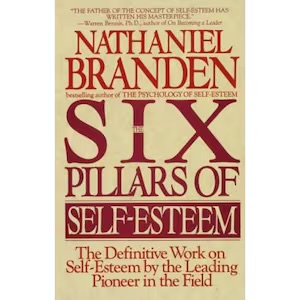Stephen Covey’s Circle of Influence: A Profound Approach to Time Management and Personal Efficiency
Introduction to the Concept of the Circle of Influence
The concept of the circle of influence, as formulated by Stephen Covey in his seminal book, “The 7 Habits of Highly Effective People”, represents a fundamental idea in time management and personal efficiency. Covey divides people’s activities and concerns into two interrelated circles: the circle of concerns and the circle of influence. The circle of concerns encompasses all those aspects that worry individuals but over which they have no direct control, such as social, political, or economic issues. On the other hand, the circle of influence is composed of those aspects in which a person has the ability to act and influence outcomes.
The importance of this concept lies in its capacity to guide the individual toward greater efficiency and solid personal development. When people concentrate on their circle of influence, they not only improve their productivity but also their personal satisfaction. This means that, instead of worrying about external factors that cannot be controlled, they can channel their energy and resources into areas where they can make a real impact. This approach helps develop skills, interpersonal relationships, and career perspectives.
Understanding and applying the concept of the circle of influence can help individuals prioritize their activities, set clear goals, and maintain a proactive attitude. However, it is essential to recognize that each person has a different circle of influence, and the key to personal and professional success is identifying and expanding it. Therefore, a careful analysis of these circles and how they intersect can lead to a more balanced and fulfilling life.
- Binding : Paperback
- Pages : 464
- Publisher : Simon & Schuster Ltd

The Difference Between the Circle of Influence and the Circle of Concerns
The concept of the circle of influence, promoted by Stephen R. Covey, is associated with effective management of time and personal resources. It suggests that people can be classified according to the way they direct their energy and attention. The circle of concerns refers to all those external aspects that worry us, yet over which we have no direct control. For example, global issues, weather conditions, or the actions of other people may be part of this circle. This area is often a source of stress and anxiety because individuals may feel overwhelmed by situations they have no power to influence.
Conversely, the circle of influence includes those aspects that are under our control. These include our reactions to others, personal decisions, and the everyday obstacles in life. By focusing on this circle, people can observe that directing attention to their actions and choices can lead to a greater impact on their environment. Thus, individuals who concentrate their attention on their circle of influence tend to develop a more positive mindset, as they can actively adjust their behaviors and reactions.
The fundamental difference between the two circles lies in the way each individual manages cognitive and emotional resources. Those who focus on the circle of concerns may experience a constant state of frustration, while those who channel their energy into the circle of influence can improve their quality of life. By actively choosing to act on what is within the circle of influence, people can become more personally efficient. Acquiring this perspective not only aids in better time management but also results in greater control over one’s own reality.
Identifying the Elements in the Circle of Influence
Identifying the elements that fall within one’s personal circle of influence is an essential process in time management and improving individual efficiency. This process begins with an honest self-assessment of one’s strengths and capabilities. A first step is to reflect on past experiences, identifying those moments when you felt that you had a significant impact on others or on the situations you faced. These moments are important indicators of your skills and talents.
Another crucial aspect is analyzing the available resources, including social support, information, and the tools at your disposal. Interpersonal relationships constitute an integral part of the circle of influence; thus, it is beneficial to identify the people who can contribute positively to your personal and professional development. Collaborating with others, especially in contexts where you have common objectives, can significantly expand your circle of influence.
It is also vital to understand your limit of influence, which involves recognizing the aspects you cannot control. Focusing your attention on those elements you can influence will help you direct your efforts effectively. Evaluate the situations and decisions in your life to determine which ones fall within your circle of influence versus those that lie outside it. By this method, you will be able to structure your priorities and manage your time in a way that reflects your personal values and objectives, thereby encouraging increased efficiency.
Strategies for Expanding the Circle of Influence
Expanding your personal circle of influence is an essential objective for improving time management and efficiency. One of the most effective strategies is networking. Creating meaningful connections with other professionals can open doors to opportunities for collaboration and development. Participating in conferences, seminars, or discussion groups relevant to your field represents an ideal opportunity for interaction. Networking should not be a superficial process; it is important to invest time in building lasting relationships based on trust and mutual respect.
Another fundamental approach is the development of interpersonal skills. Effective communication, empathy, and negotiation skills contribute to the growth of your circle of influence. People who demonstrate solid interpersonal competencies are more likely to earn the support of others and become natural leaders. This is not just about being a good communicator; it is also about listening actively, understanding others’ perspectives, and offering support when needed.
Building positive relationships is also a key strategy. Offering help and support to colleagues not only improves the work atmosphere but also strengthens your reputation. Creating an open work environment where constructive feedback is appreciated can transform you into a reference figure within your team, the person others turn to for solutions.
By implementing these strategies—networking, developing interpersonal skills, and consolidating positive relationships—each individual can expand their circle of influence and, consequently, optimize their time management and overall efficiency.
The Impact on Time Management
Covey’s circle of influence provides an effective framework for managing time, focusing on prioritizing activities that are within our sphere of control. In this context, time management becomes a deliberate choice, where individuals can maximize their personal and professional efficiency. When we focus on activities within our circle of influence, we can avoid distractions and tasks that do not contribute to achieving our essential objectives.
A relevant example is managing daily tasks. Instead of being overwhelmed by activities that are outside our sphere of influence, such as the reactions of others or external events, it is more productive to focus our attention on tasks we can control, such as setting priorities or planning. An effective strategy is the use of a priority list that includes only those tasks that directly contribute to the established objectives. This helps maximize productivity because it allows time and resources to be allocated judiciously.
Furthermore, structuring your time improves efficiency. The implementation of techniques such as the Pomodoro technique, where periods of intensive work are alternated with short breaks, can support focus on priority tasks. Thus, for each work interval dedicated to activities that fall within your circle of influence, it is important to evaluate your progress and adjust strategies accordingly. This not only optimizes time management but also contributes to better stress management.
The Circle of Influence in the Professional Environment
Covey’s circle of influence proves to be a valuable tool in time management and personal efficiency in the professional environment. This approach encourages employees to focus on aspects that are within their sphere of influence, setting aside external factors over which they have no control. As a result, a more proactive and stimulating work atmosphere is generated, contributing to increased productivity.
A concrete example is the case of a technology company where employees were encouraged to define their circle of influence. They identified their priority tasks and delegated responsibilities that exceeded their area of control. This approach led to a significant improvement in team efficiency, allowing members to concentrate on innovation and product development, which in turn led to increased sales.
On the other hand, studies have shown that employees who focus on their circle of influence develop better time management skills. They feel less stressed because they channel their energy toward activities that bring a real impact. For example, a manager who applies this method manages to lead their team to success by developing individual skills instead of focusing on less relevant external aspects.
In conclusion, applying the circle of influence in the professional environment not only improves personal efficiency but also advances employees’ careers. This mode of thinking can transform the way daily activities are carried out in the workplace, ensuring a more harmonious and productive setting.
Success Stories Through the Application of the Circle of Influence
The concept of the circle of influence, as described by Stephen Covey, has had a significant impact on many individuals, helping them improve their time management and personal efficiency. Many success stories illustrate how this approach can transform people’s lives.
For example, Maria, a young marketing professional, adopted the circle of influence to better manage her daily responsibilities. After realizing that her constant worries about situations beyond her control were draining her emotionally, she decided to focus on the aspects over which she had the power to act. By prioritizing tasks and eliminating distractions, Maria managed to improve her productivity at work, earning recognition from her superiors.
Another example is Radu, an entrepreneur who applied this principle in his business. He discovered that by emphasizing his circle of influence, he could proactively respond to external challenges instead of being overwhelmed by them. Radu began to develop strategies that gave him control over his business decisions. This change in mindset led to increased revenues for his company and the formation of more constructive relationships with clients and business partners.
These testimonials reflect not only personal transformations but also the lessons learned. By applying the circle of influence, individuals gain a better understanding of their limits and the power of action, which allows them to live more efficiently and maximize their achievements. These stories exemplify the strength of this concept in daily life, highlighting how conscious decisions can lead to lasting well-being and accomplishments.
Challenges in Applying the Circle of Influence
The application of the circle of influence, as described by Stephen R. Covey, can present various challenges for individuals trying to manage their time efficiently and improve their personal efficiency. One of the most common challenges is the tendency to focus on external problems that lie outside the circle of influence, which can lead to feelings of frustration and a lack of progress. This approach can consume time and mental resources that could be better used in areas where the individual has control and the ability to act.
Another common challenge is the external influence of opinions and societal expectations. Many people feel pressured to focus on goals that do not align with their personal values, which leads to a decline in motivation and efficiency. In this context, it is essential for individuals to clarify their priorities and values so that they can consciously act on what is within their circle of influence.
Among the proposed solutions for overcoming these obstacles are techniques of self-reflection and strategic planning. An effective approach would be to set specific and measurable objectives that align with the circle of influence, so that each action is oriented toward positive impact. In addition, establishing regular sessions for personal feedback can help evaluate progress and adjust action plans, thereby facilitating the time management process. Thus, continuous adaptation to encountered challenges is essential for an effective implementation of the circle of influence concept.
Conclusion
Stephen Covey’s circle of influence represents an essential tool in the process of personal development and professional efficiency. This approach not only facilitates the identification of aspects that can be controlled but also encourages individuals to take responsibility for the impact their decisions have on their lives. Within the circle of influence, each person can learn to focus on internal factors instead of being distracted by external situations that are usually beyond their authority.
In developing time management strategies, it is crucial to prioritize aspects that fall within the circle of influence. This helps to minimize stress and create a more productive environment. The implementation of this principle can lead to a more balanced life and an overall improved state of well-being. Furthermore, learning to focus on what we can change helps us develop problem-solving skills, which contributes to both personal and professional success.
To continue developing your skills within the circle of influence, it is recommended to periodically reflect on your direction and priorities. Practicing self-assessment techniques and setting SMART goals (Specific, Measurable, Achievable, Relevant, and Time-bound) can be effective methods for consolidating this approach. Additionally, reading works by Covey and other authors who discuss personal development can offer valuable perspectives and inspiration to improve time management and efficiency skills. Thus, the consistent application of the circle of influence concept in everyday life will undoubtedly lead to positive and lasting evolution.
What does the concept of Stephen Covey’s circle of influence represent?
The circle of influence is a conceptual tool introduced by Stephen Covey to help individuals focus their energy and efforts on things they can control. Covey divides a person’s concerns into two circles: the circle of concerns, which includes aspects over which we have no control (for example, politics, weather), and the circle of influence, which refers to things that can be directly influenced, such as personal decisions, reactions, and interpersonal relationships. By focusing on the circle of influence, people can increase their productivity and personal efficiency while reducing stress related to external concerns.
How does the circle of influence differ from the circle of concerns?
The main difference lies in the level of control:
- The circle of concerns includes external issues over which we have no direct control (for example, the global economy or the behavior of others).
- The circle of influence focuses on aspects we can change, such as our habits, communication, or personal decisions.
Focusing on the circle of concerns generates frustration and powerlessness, while directing attention to the circle of influence promotes a proactive mindset and greater efficiency in time management.
Why is it important to focus on the circle of influence?
Focusing on the circle of influence allows us to allocate our mental and physical resources effectively. This reduces the stress and anxiety caused by trying to control aspects that are beyond our reach. Concentrating on what we can influence helps us achieve our goals, develop positive relationships, and increase our self-confidence. Moreover, this approach has a domino effect: as we become more efficient in managing our influence, our circle of influence tends to expand.
How can we identify the elements in our circle of influence?
Identifying the elements in the circle of influence involves:
- Self-reflection: Analyzing past situations where you made a positive impact.
- Recognizing resources: Identifying your skills, relationships, and available tools.
- Evaluating priorities: Clearly setting objectives and activities that contribute to their achievement.
A useful exercise is to divide your daily concerns into two lists: things you can control and things that are beyond your control.
How can we expand our circle of influence?
Expanding the circle of influence requires deliberate strategies such as:
- Networking: Building authentic and collaborative relationships.
- Improving interpersonal skills: Developing competencies in communication, negotiation, and leadership.
- Proactivity: Finding solutions instead of focusing on problems.
- Creating a positive reputation: Offering support and solutions within your community or team.
Through these practices, individuals can attract more opportunities and gain the trust of others, which contributes to the expansion of their influence.
How does the circle of influence affect time management?
Time management becomes more efficient when we focus on activities within the circle of influence. For example, instead of worrying about political decisions or economic conditions, we can prioritize tasks that we can control. Covey suggests using a priority list and daily planning techniques to channel our energy toward tangible objectives. This way, time is used more judiciously, and personal efficiency increases.
What benefits does applying the circle of influence bring in the professional environment?
In the professional environment, applying this concept helps to:
- Reduce conflicts: Focusing on solutions rather than external problems.
- Increase productivity: Directing efforts toward clear and achievable objectives.
- Improve leadership: Leaders who concentrate on their circle of influence become role models for their teams, encouraging a proactive culture.
This leads to a more efficient and harmonious work environment.
What are the main challenges in applying the concept of the circle of influence?
Challenges include:
- The tendency to focus on external concerns, such as others’ opinions or global issues.
- A lack of clarity regarding priorities: Sometimes, individuals do not correctly identify what they can control.
- Social pressure: External expectations can distract from personal objectives.
Solutions include clarifying objectives, self-reflection, and developing a proactive mindset.
How can the circle of influence be used to overcome personal obstacles?
The circle of influence can be used to overcome personal obstacles by:
- Accepting limits: Recognizing that certain aspects cannot be changed.
- Focusing on solutions: Identifying actions that can be taken to progress.
- Engaging in self-development practices: Such as meditation, setting goals, and improving skills.
This approach reduces feelings of helplessness and helps build resilience.
What is the legacy of the circle of influence concept in personal development?
The legacy of the circle of influence lies in its ability to inspire a proactive and responsible mindset. This concept continues to be an essential tool for personal and professional development, helping individuals manage their time better and achieve their goals. The circle of influence not only provides a framework for self-reflection but also encourages the development of a more balanced and satisfying life.









